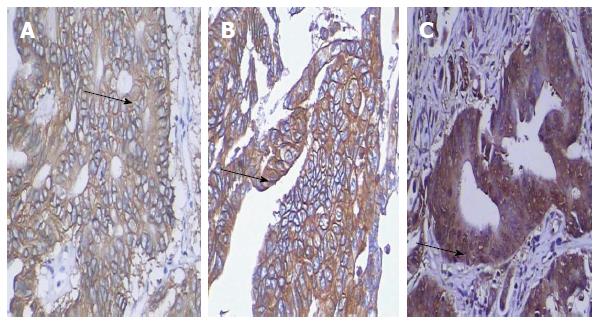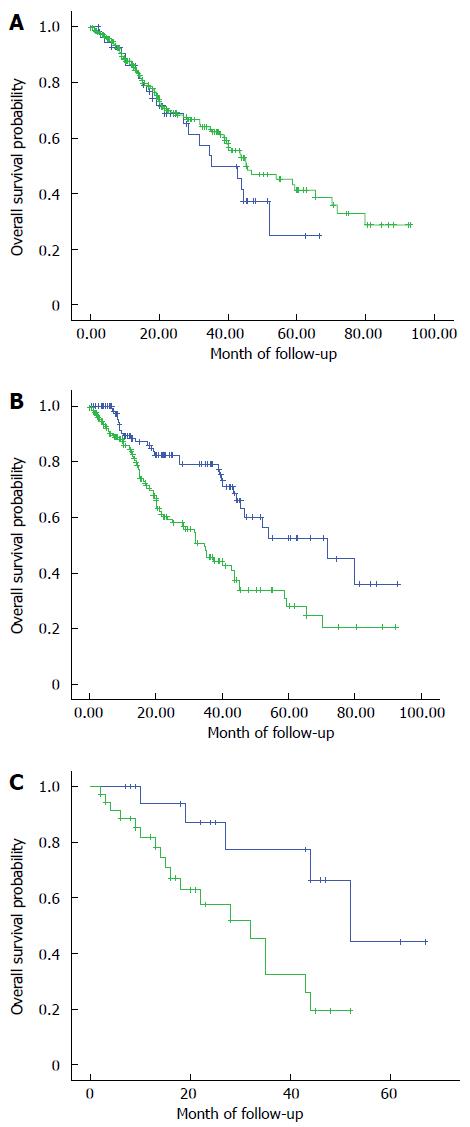Copyright
©2014 Baishideng Publishing Group Co.
World J Gastroenterol. Apr 21, 2014; 20(15): 4440-4445
Published online Apr 21, 2014. doi: 10.3748/wjg.v20.i15.4440
Published online Apr 21, 2014. doi: 10.3748/wjg.v20.i15.4440
Figure 1 Immunohistochemical detection of human epidermal growth factor receptor 2 and death decoy receptor expression in colorectal cancer.
Serial-section specimens from one representative case are shown (× 200). A: Human epidermal growth factor receptor 2 (HER2)-positive tumor section, scored as 2+ (arrow); B: HER2-positive tumor section, scored as 3+ (arrow); C: Death decoy receptor-positive tumor section showing staining in > 10% of the tumor cells (arrow).
Figure 2 Kaplan-Meier overall survival curves.
A: Kaplan-Meier overall survival curves for the 300 colorectal cancer patients, according to immunohistochemical detection of human epidermal growth factor receptor 2 normal (green) and overexpression (blue). The difference between the curves did not reach statistical significance (P = 0.344); B: Kaplan-Meier overall survival curves for the 300 colorectal cancer patients, according to immunohistochemical detection of death decoy receptor normal (green) and overexpression (blue). The difference between the curves was significant (P < 0.001); C: Kaplan-Meier overall survival curves for the 300 colorectal cancer patients, according to immunohistochemical detection of human epidermal growth factor receptor 2 overexpression in isolation (blue) or coincident with (green) death decoy receptor overexpression. The difference between the curves was significant (P = 0.006).
- Citation: Zong L, Chen P, Wang DX. Death decoy receptor overexpression and increased malignancy risk in colorectal cancer. World J Gastroenterol 2014; 20(15): 4440-4445
- URL: https://www.wjgnet.com/1007-9327/full/v20/i15/4440.htm
- DOI: https://dx.doi.org/10.3748/wjg.v20.i15.4440










